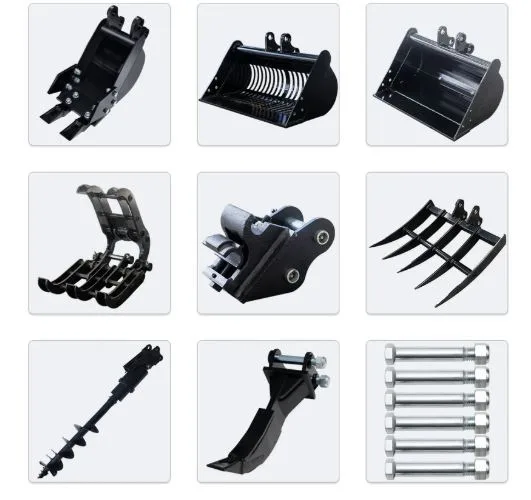All-in-One Business Mobile Shopping: One Quote, Multiple Networks
The way businesses shop for mobile plans has changed dramatically in the past decade. What was once a tedious, time-consuming process is now becoming faster, smarter, and more cost-effective.
For many companies, communication is the lifeline of operations. Sales teams, logistics managers, service technicians, and executives rely on their mobile connections every day. But with so many providers and packages available, how can a business choose the right plan without drowning in options?
This is where the idea of all-in-one business mobile shopping comes in. Instead of calling multiple carriers, requesting quotes one by one, and comparing offers that almost never look the same, modern platforms now let you request a single quote and receive multiple network options.
Simply put, you get the information you need in one place without the hassle.
Why Mobile Shopping Is a Headache for Businesses
Before diving into the all-in-one solution, it helps to understand why buying business mobile plans has been such a pain in the first place.
- Different pricing models: Carriers structure rates differently. Some advertise per-line discounts, while others emphasize pooled data. Comparing two quotes is rarely apples to apples.
- Complex contracts: Long-term commitments, early termination fees, and hidden charges can trap companies in unsuitable plans.
- Time drain: For a business owner or office manager, calling three or four providers, waiting for callbacks, and negotiating takes hours that could be spent on more valuable work.
- Unclear coverage: One network may look perfect on paper but fail to deliver strong coverage in certain job locations.
This combination means businesses often settle for an “okay” deal rather than the best one. They may overspend on unused data, or lock into a contract that doesn’t match how their team actually works.
The Rise of One Quote, Multiple Networks
The new shopping model flips the process. Instead of chasing carriers individually, businesses can now enter their details once and receive tailored offers from several networks. Think of it as a comparison engine built for businesses.
Here is how it typically works:
- A business enters basic details such as team size, expected data use, need for mobile devices or SIM-only plans.
- The platform scans multiple carrier networks and prepares competitive packages.
- The company receives a set of offers side by side, each with clear pricing and contract terms.
- From there, decision-makers can compare, negotiate, and choose the option that makes the most sense.
The beauty of this system lies in transparency. Instead of getting confused by scattered information, you have all the facts in one place.
Benefits for Businesses
Saves time and effort
With a single request, you cut out countless phone calls and email threads. Decision-makers spend minutes instead of days getting to a shortlist of options.Better cost control
By comparing multiple offers at the same time, it’s easier to see which plan truly delivers value. Competition between networks also drives prices lower.Tailored solutions
Some providers are stronger in urban areas, while others excel in rural coverage. With all options in front of you, you can choose based on your team’s actual service areas.Flexibility
Not every company’s needs are the same. Some may need unlimited talk and text, while others care more about international data roaming. Having multiple offers lets you match features to your priorities.Clearer contracts
Modern platforms often simplify the legal language, showing businesses the important terms upfront. This reduces the risk of surprises later.
Who Benefits Most from This Model?
While any company can use mobile shopping alone, certain businesses stand to gain the most:
- Small businesses and startups: Young companies often don’t have time or staff to negotiate multiple contracts. A one-quote model saves both money and stress.
- Companies with mobile workforces: Delivery drivers, construction crews, real estate agents, and field technicians need strong coverage wherever they go. Comparing networks side by side helps avoid gaps.
- Regional businesses: If your staff covers multiple cities or states, a single network might not be enough. Having options across careers ensures consistent communication.
- Growing firms: Businesses that plan to scale quickly need flexible contracts that can add lines as new staff join. Shopping across multiple networks helps find expansion-friendly terms.
How It Impacts Carrier Competition
From the carrier side, all-in-one shopping pushes providers to be more transparent and competitive. BusinessMobilestold us that when a buyer can clearly compare features and prices, carriers must sharpen their offers.
Companies like Barton Telecom also contribute to this competitive landscape by presenting businesses with multiple network options upfront.In the long run, this can benefit businesses with lower costs and better service.
Carriers also gain exposure to customers they might otherwise miss. For example, a small regional carrier can show up alongside national providers in the same results page. This levels the playing field and increases choice.
The Role of Technology
This shopping model is made possible by advances in digital platforms. Behind the scenes, software pulls data from multiple carriers, analyzes contract terms, and filters out irrelevant packages. Machine learning can even predict usage patterns and flag which plans are likely to be the best fit.
The user, however, sees only a clean dashboard with a set of side-by-side offers. This is where simplicity meets technology. Businesses don’t need to understand the algorithms. They just enjoy the results: faster comparisons and smarter decisions.
Final Words
All-in-one business mobile shopping is not just a convenience—it’s becoming a competitive advantage. With one quote request, companies can receive multiple network options and choose the best fit without wasting hours in negotiations.
In a world where constant communication drives sales, productivity, and customer satisfaction, the right mobile plan can be the difference between smooth operations and daily headaches. By embracing smarter shopping tools, businesses can save money, reduce stress, and focus on what truly matters, which is growing their business.
What exactly is all-in-one business mobile shopping?
It’s like having a personal assistant for mobile plans. Instead of phoning three or four carriers, waiting on hold, and trying to compare apples with oranges, you simply enter your details once. From there, a platform gathers multiple network offers and puts them side by side. One request, multiple quotes, zero hassle.
Why is it better than going directly to a carrier?
When you go directly to one carrier, you only see what they want to sell you. With all-in-one shopping, you see what everyone is offering at the same time. That transparency makes it easier to spot hidden fees, understand real coverage, and avoid overpaying. Plus, competition between networks usually means sharper deals for you.
Will this actually save my business time?
Absolutely. Think about the hours you’d normally spend chasing quotes, emailing back and forth, and trying to decode contracts. With this model, the heavy lifting is done for you. Most businesses get to a shortlist of options in minutes, not days—leaving you more time to focus on running the company.
What if my business has unique needs, like international roaming or rural coverage?
That’s the beauty of seeing multiple offers at once. Some carriers shine in urban areas, while others are better for rural coverage or global data. Instead of being stuck with a one-size-fits-all plan, you can pick and choose the features that actually match how your team works.
Is this only for big companies with huge budgets?
Not at all. In fact, small businesses and startups often benefit the most. They usually don’t have time (or staff) to chase down five different carriers. With a single request, they can quickly find a plan that saves money and scales as they grow.
How does this affect carriers themselves?
It keeps them honest. When their offers are placed right next to competitors’, they can’t hide behind confusing terms or inflated prices. They have to compete on real value. In the end, that’s a win-win: businesses get fairer deals, and carriers reach customers they might not have landed otherwise.


